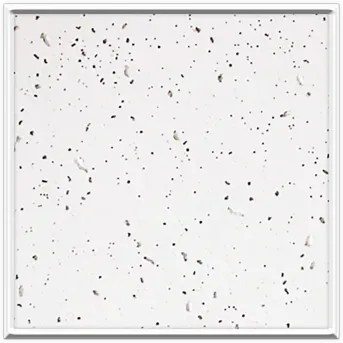Dec . 11, 2024 03:59 Back to list
Suspended Ceiling Cross Tee Installation and Design Guide for Optimal Aesthetic Appeal
Understanding Suspended Ceiling Cross Tee Systems
Suspended ceilings, also known as drop ceilings or false ceilings, are widely used in commercial and residential buildings to offer both aesthetic appeal and functional benefits. One of the essential components of these ceilings is the cross tee system. Understanding how suspended ceiling cross tees work can greatly aid in designing and installing effective ceiling systems.
What Are Cross Tees?
Cross tees are horizontal grid elements that are installed perpendicularly to the main runner beams of a suspended ceiling system. They serve as the framework that supports the ceiling tiles or panels, contributing to the overall structural integrity of the ceiling. Cross tees come in various lengths, typically ranging from 2 to 4 feet, allowing for flexible design options in different room sizes and shapes.
The Importance of the Cross Tee System
1. Structural Support The primary function of cross tees is to provide solid support for ceiling panels. Cross tees help distribute the weight evenly across the ceiling grid, which is crucial to prevent sagging or damage, especially in areas with heavy foot traffic or equipment overhead.
2. Versatility in Design Cross tees offer tremendous versatility, allowing designers to create various configurations and patterns. Whether the ceiling is intended to be functional, aesthetic, or a combination of both, these systems can be adjusted to meet particular design needs. For example, integrating lights, speakers, or HVAC systems into a drop ceiling is common practice, and cross tees facilitate this by allowing for quick adjustments.
3. Acoustic Performance Another essential aspect of suspended ceilings is their capability to reduce noise levels within a space. The materials used in ceiling tiles, combined with the grid and layout of cross tees, can significantly enhance a room’s acoustic performance, making it an ideal choice for offices, schools, and theaters.
4. Concealment of Utilities Suspended ceilings are an effective way to hide mechanical and electrical systems, such as ductwork, plumbing, and wiring. This not only maintains the aesthetic appeal of a room but also allows for easier access to these systems for maintenance and repairs. Cross tees play a vital role in this concealment by providing a consistent and reliable structure to which panels and tiles can be attached.
suspended ceiling cross tee

Installation and Considerations
When installing a suspended ceiling with cross tees, careful planning and measurement are paramount. Here are some considerations to keep in mind during the installation process
- Layout Planning Before installation, it's crucial to create an accurate layout. Measure the dimensions of the room and determine the placement of the main runners and cross tees. The standard grid spacing is typically 2 feet by 2 feet; however, adjustments can be made based on the specific needs of the space.
- Leveling Ensure that the main runners are level before installing cross tees. Any discrepancies in level can lead to an uneven ceiling, which can affect both the aesthetics and the functionality of the ceiling system.
- Height Considerations Take into account the height of the ceiling and any overhanging systems (such as lights and HVAC ducts) that may affect the final installation. Cross tees should be installed at appropriate intervals to maintain structural integrity while allowing room for any fixtures that need to be integrated.
- Material Choices Cross tees are available in various materials, including metal and fiberglass. The choice of material can influence both the durability and the aesthetic of the ceiling. Metal cross tees tend to be more robust and offer better moisture resistance, while fiberglass options can be lighter and may offer better acoustic properties.
Conclusion
Suspended ceiling cross tees are vital components that contribute significantly to the functionality and aesthetics of a suspended ceiling system. By understanding their role, benefits, and installation considerations, builders and designers can create effective ceiling solutions that not only meet the practical needs of a space but also enhance its visual appeal. As construction and design trends continue to evolve, suspended ceilings with well-implemented cross tee systems will remain a popular choice in both commercial and residential applications.
-
Quality Ceiling Trap Doors & Access Panels | Easy & Secure AccessNewsAug.30,2025
-
Durable Ceiling T Grid Systems | Easy InstallationNewsAug.29,2025
-
PVC Gypsum Ceiling: Durable, Laminated Tiles for Modern SpacesNewsAug.28,2025
-
Pvc Gypsum Ceiling Is DurableNewsAug.21,2025
-
Mineral Fiber Board Is DurableNewsAug.21,2025
-
Ceiling Tile Clip Reusable DesignNewsAug.21,2025







